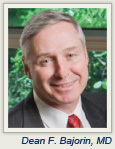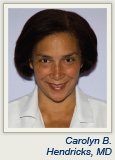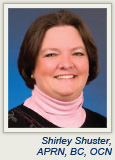Is the expanded use of nonphysician providers (NPPs) a viable way to help ease the challenges oncology practices could feel if the number of oncologists entering the field does not keep pace with potential growth in the demand for their services?
The ASCO Workforce Advisory Group thought the question had great merit. To collect real-world data to test it, the group asked Oncology Metrics, a division of Altos Solutions, Los Altos, California, to conduct a national survey among U.S. oncology practices. The purpose: to identify the collaborative practice models and services provided by NPPs that have proven most effective among those practices that employ them, and also to find out how patients, physicians, and NPPs feel about working together. NPPs are also known as midlevel or advanced practice providers.
Conducted in 2009–2010, the ASCO Study of Collaborative Practice Arrangements was funded by Susan G. Komen for the Cure®, and the results have just been published in the September issue of the Journal of Oncology Practice.
Satisfaction High for All
 The results, it turns out, were very illuminating, showing that satisfaction among patients seen in practices with NPPs was high, with virtually all patients recognizing who was an NPP and who was an oncologist.
The results, it turns out, were very illuminating, showing that satisfaction among patients seen in practices with NPPs was high, with virtually all patients recognizing who was an NPP and who was an oncologist.
“That dispelled a couple of myths: that patients didn’t always know they were being treated by an NPP, and also that patients weren’t as comfortable with them since they’re not doctors. Neither of those turned out to be the case,” said Dean F. Bajorin, MD, a Cochair of the Workforce Advisory Group.
The study also showed that physicians and NPPs—usually nurse practitioners or physician assistants—experienced very high satisfaction with the arrangement and reported that productivity increased in their practice after the integration of NPPs. The typical NPP-to-physician ratio was found to be one NPP to two physicians, and the most popular model for employing NPPs was the incident-to-practice model, in which the NPP routinely sees patients independently of the physician, with the physician always present in the office suite if needed.
Huge Oncologist Shortage Projected
The time for employing such workplace alternatives is now, said Dr. Bajorin, who is Attending Physician in the Genitourinary Oncology Service at Memorial Sloan-Kettering and Professor of Medicine at Weill Medical College of Cornell University. He pointed to a 2007 ASCO study showing that by 2020 the demand for visits to oncologists is expected to increase 48%, while the number of practicing oncologists will rise by only 14%. The increased demand is due largely to a calculated doubling of the number of Americans who will be older than age 65, and an 81% increase in people living with or surviving cancer. The study projected an alarming shortfall of between 2,550 and 4,080 oncologists by 2020.
“Our system can’t train enough oncologists to respond to that need—it’s simply not possible,” Dr. Bajorin said. “We have to have other ways to meet demand for oncology services while maintaining a high level of excellence. Midlevel practitioners or nonphysician providers provide an opportunity to do that.”
Study coauthor Elaine L. Towle, CMPE, Director of Consulting Services at Oncology Metrics, explained that the first round of surveys yielded 226 responses, from which 33 practices were chosen for more in-depth study. Satisfaction surveys were administered to the physicians, NPPs, and patients in each of the 33 practices. Finally, focus groups or interviews were conducted to go even deeper.
NPPs: More Time to Spend with Patients
 The Center for Breast Health in Bethesda, Maryland, was among the 33 practices that had in-depth study. The Center has used certified nurse practitioners since its inception in 2001, and at the time that it participated in the study, it had two physicians and two nurse practitioners. Medical Director Carolyn B. Hendricks, MD, said the practice uses the incident-to-practice model in which nurse practitioners handle most routine patient visits, with the physician nearby. If there are complications or a patient has metastatic cancer, the physicians and nurse practitioners alternate visits, with the patient always getting a heads-up about whom they’ll see next time. Also, so that patients don’t feel in any way cut off from their physician, the nurse practitioners always ask at the end of each visit whether there’s anything the patient would like to talk to the doctor about.
The Center for Breast Health in Bethesda, Maryland, was among the 33 practices that had in-depth study. The Center has used certified nurse practitioners since its inception in 2001, and at the time that it participated in the study, it had two physicians and two nurse practitioners. Medical Director Carolyn B. Hendricks, MD, said the practice uses the incident-to-practice model in which nurse practitioners handle most routine patient visits, with the physician nearby. If there are complications or a patient has metastatic cancer, the physicians and nurse practitioners alternate visits, with the patient always getting a heads-up about whom they’ll see next time. Also, so that patients don’t feel in any way cut off from their physician, the nurse practitioners always ask at the end of each visit whether there’s anything the patient would like to talk to the doctor about.
Dr. Hendricks recalled that the study showed that all but two of her 530 patients reported high satisfaction with nurse practitioners. Those two respondents expressed concerns about the experience level of the nurse practitioners. In response to those comments, Hendricks changed her model a bit, now always seeing new patients first and explaining to them that the nurse practitioner is an experienced member of the team whose job is to enhance patient care. From there, she explains how often the patient will see the nurse practitioner.
Dr. Hendricks said that the lion’s share of patients have been very pleased with nurse practitioners because the nurse practitioners can give them far more attention than most physicians can. “They don’t have the same stream of interruptions and distractions that I do; they can go in the exam room with a patient and shut the door for 30 minutes, and the patients really appreciate that,” she commented. “I would personally love to do that but instead need to field physician and hospital calls.”
Partnership Model Becoming More Common
 Shirley Shuster, APRN, BC, OCN, an NPP since 1976, says she’s aware of many oncologists partnering with NPPs to handle patient care these days, rather than the old model of relegating them strictly to administering chemotherapy.
Shirley Shuster, APRN, BC, OCN, an NPP since 1976, says she’s aware of many oncologists partnering with NPPs to handle patient care these days, rather than the old model of relegating them strictly to administering chemotherapy.
“If employed in the right way, the NPP really saves time; oncologists are starting to recognize that now,” said Ms. Shuster, Director of Clinical Services at Commonwealth Hematology Oncology in Quincy, Massachusetts, which also participated in the study.
Ms. Shuster added that patients seem to appreciate that when oncologists employ NPPs, there is a team of people putting their heads together on their care rather than just a lone doctor. “The patient realizes that the NPP and the physician are communicating about their treatment plan; they understand that we’re talking to each other about their care, collaborating on it—they feel comforted by that,” she said.
Next: More Tailored Education
The study—which represents the first in-depth analysis of how oncology practices are using NPPs—makes a very strong case for oncologists who don’t already team up with NPPs to explore doing so as soon as possible. “The integration of nonphysician practitioners into oncology practice offers a reliable means to address increased demand for oncology services without adding physicians,” the authors of the study concluded.
Dr. Bajorin said that the Workforce Advisory Group is considering possible next steps, such as helping to formalize oncology training for NPPs, many of whom come into oncology practices with training only in adult medicine and must then get their oncology know-how on the job in apprentice fashion. Dr. Bajorin said ASCO is talking with nursing and physician assistant societies about the possibility of collaborating, as the shortage of oncologists mounts.
© 2011. American Society of Clinical Oncology. All rights reserved.

